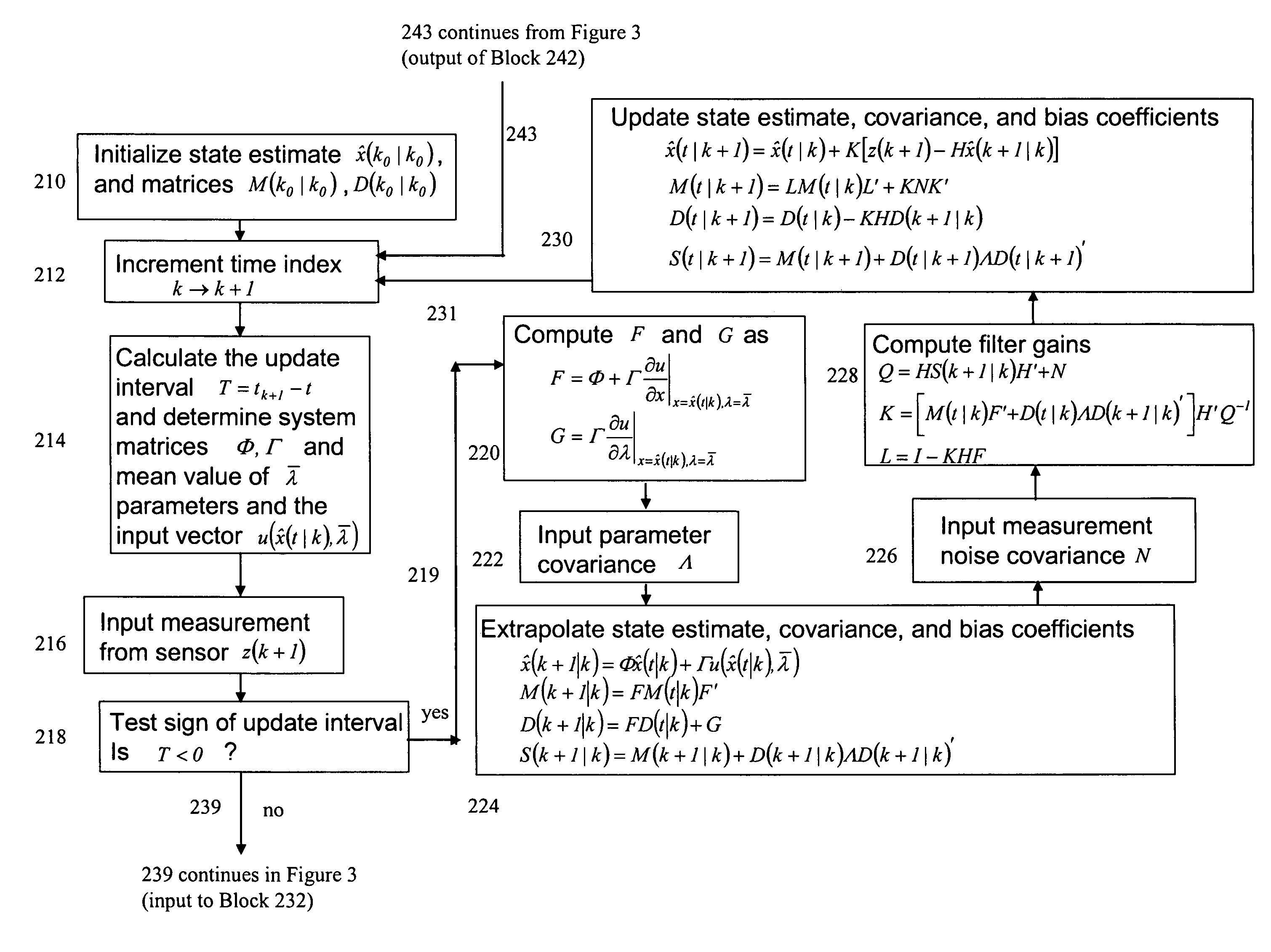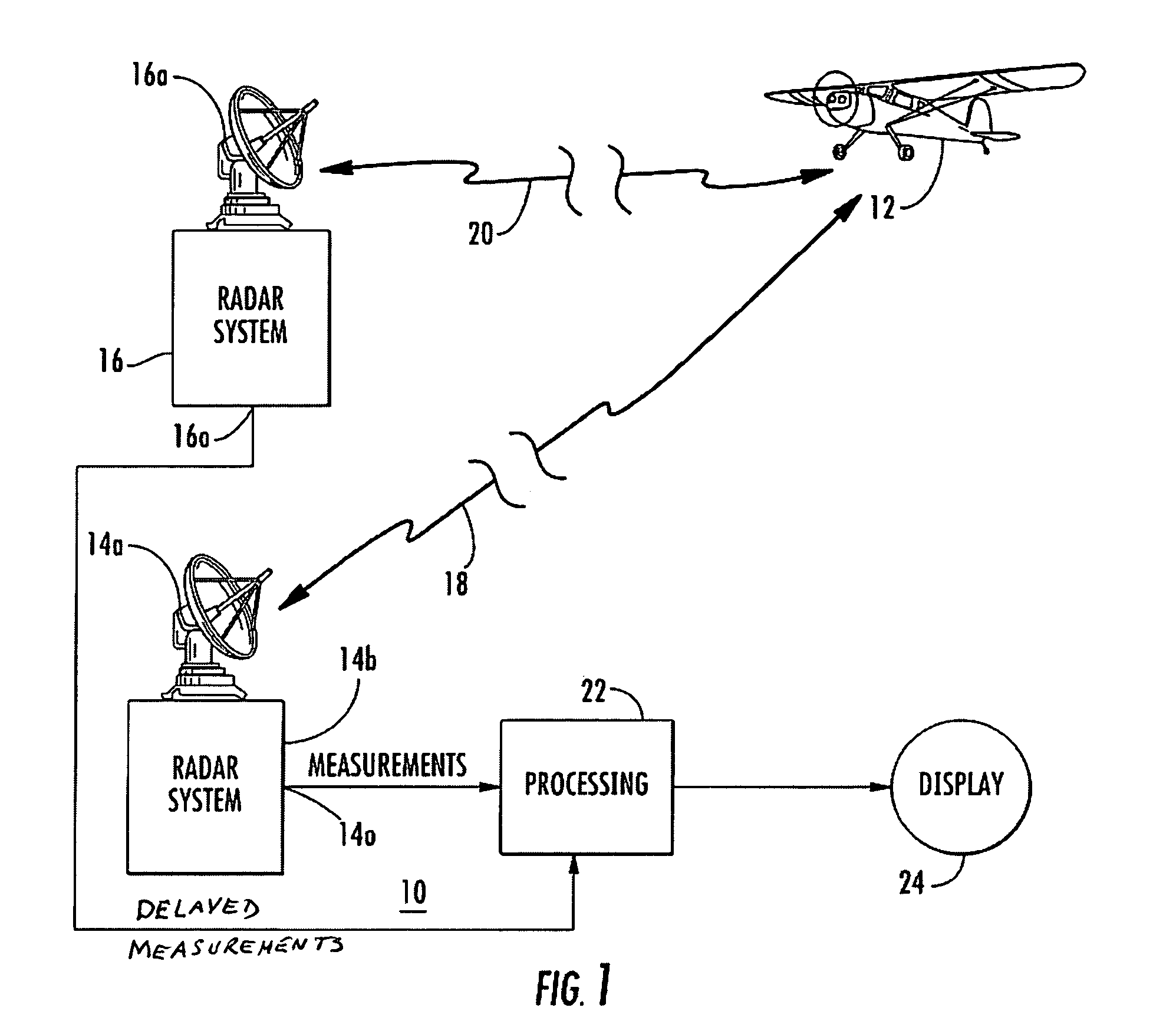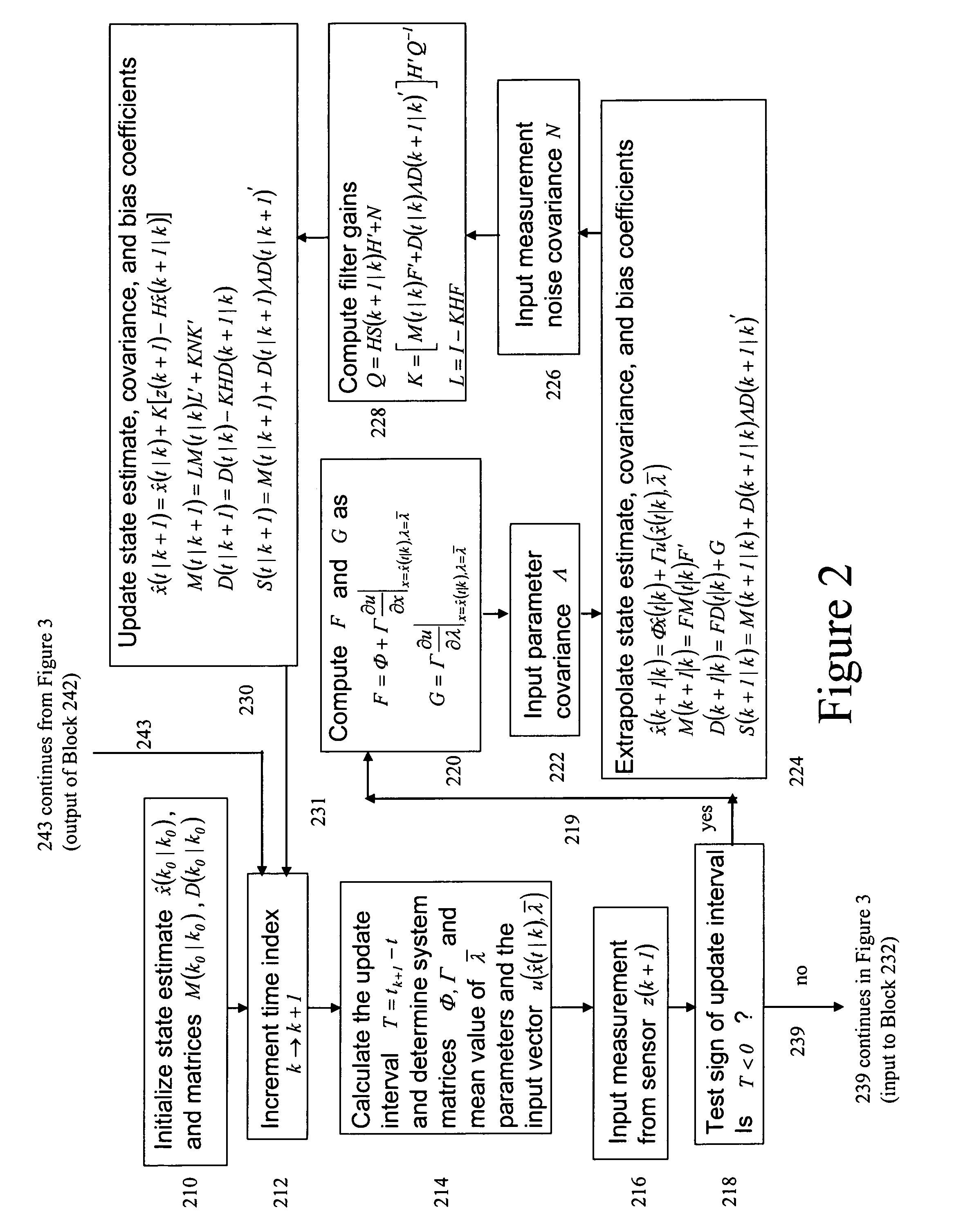Reduced state estimation with multisensor fusion and out-of-sequence measurements
a multisensor fusion and out-of-sequence measurement technology, applied in the direction of instruments, measurement devices, using reradiation, etc., can solve the problems of different delays from various sensors to the processing site, methodology not making good use of that sensor, and complicating the design of a kalman filter
- Summary
- Abstract
- Description
- Claims
- Application Information
AI Technical Summary
Benefits of technology
Problems solved by technology
Method used
Image
Examples
Embodiment Construction
[0048]The solution of the problem of state estimation after processing measurements with time delays from multiple sensors of systems characterized by state variables and by multidimensional parameters, for which the latter are unknown and may vary arbitrarily in time within known physical bounds requires a completely different method, which is incorporated in an aspect of the invention. The simplified logic flow chart or diagram 200 of FIG. 2 illustrates a method according to an aspect of the invention. In FIG. 2, the logic flow of the invention begins in a block 210 with initialization of the state estimate {circumflex over (x)}(k0|k0) and the matrices M(k0|k0), D(k0|k0). In general, a vector {circumflex over (x)}(t|k) is defined as the estimate of the state of the system at time t after processing k measurements z(i) for 1≦i≦k. The vector {circumflex over (x)}(tj|k) is denoted as {circumflex over (x)}(j|k) when the time t=tj is the time of the jth measurement for j=1,2,3, . . . ....
PUM
 Login to View More
Login to View More Abstract
Description
Claims
Application Information
 Login to View More
Login to View More - R&D
- Intellectual Property
- Life Sciences
- Materials
- Tech Scout
- Unparalleled Data Quality
- Higher Quality Content
- 60% Fewer Hallucinations
Browse by: Latest US Patents, China's latest patents, Technical Efficacy Thesaurus, Application Domain, Technology Topic, Popular Technical Reports.
© 2025 PatSnap. All rights reserved.Legal|Privacy policy|Modern Slavery Act Transparency Statement|Sitemap|About US| Contact US: help@patsnap.com



